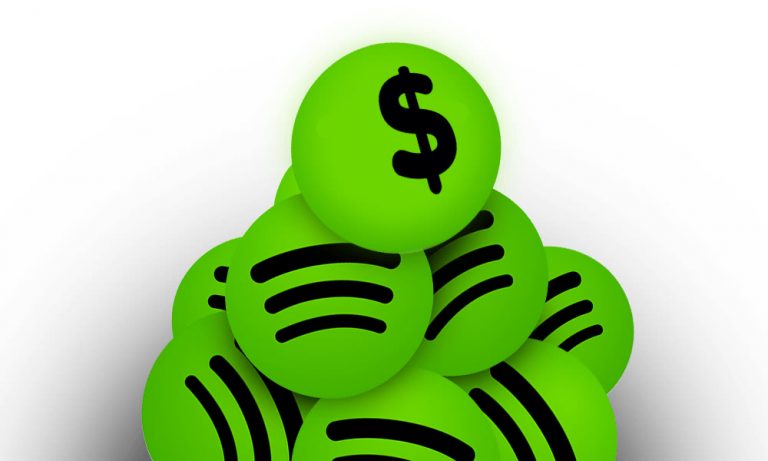Whether it’s a curated selection of pop jams to gear us up for a night out, or something more laid-back for some distraction-free study, many of us chuck on a pre-made Spotify playlist here and there. But how often do we actually pause it for a moment to ponder who made the tracks we’re currently listening to? And can we be certain that the artist we’re listening to even exists?
Sure, they ‘exist’ in so much as the songs were created by real musicians rather than the not-too-far-off artificial musos, but as Music Business Worldwide contends, not all of the artists we listen to on Spotify seem to be who they say they are.
In a report MBW ran in 2016, they contended that Spotify was filling out some of its playlists with songs that were recorded not by regular artists signed to the usual record labels, but instead musicians who were hired by Spotify to create similar sounding music especially for the platform. But while Spotify has now fiercely denied the claims that they are effectively operating as a record label for fake artists, a follow-up piece by MBR asserts that at least fifty of its artists are indeed pseudonyms that exist nowhere else but inside those playlists.
They cite a discussion with a European producer who claimed to have signed a deal with Spotify to create songs under pseudonyms, to be used in playlists including ‘Peaceful Piano’ and ‘Deep Focus’, and provided the full list of names, which did exist and had each tallied over half a million streams on certain tracks.
These ‘artists’ like ‘Charles Bolt’, they allege, have no presence on social media or other streaming platforms, and aren’t signed to any labels, despite their millions of streams on Spotify. Instead, they are mocked-up artists designed to pad out playlists and save money that would otherwise be paid to record labels and their signed artists.
Who is Charles Bolt?
The move would be a smart one on Spotify’s part, considering that it needs to find some way to stem the ever-increasing losses that come largely from having to pay huge amounts in royalties. While the company turned over $3bn US last year, its losses doubled to an astonishing $581m, and MBW asserts that even the small selection of “fake” artists it’s discovered filling out the playlists resulted in 520m combined streams, and would have saved the company $3m in royalties.
“We do not and have never created ‘fake’ artists and put them on Spotify playlists. Categorically untrue, full stop,” a spokeperson for Spotify has said in response to the claims.
“We pay royalties – sound and publishing – for all tracks on Spotify, and for everything we playlist,” they add. “We do not own rights, we’re not a label, all our music is licensed from rights-holders and we pay them – we don’t pay ourselves.”
But while they may still pay these artists royalties for their work rather than one-off fees, it’s alleged that these royalties are far lower than what other artists would receive, helping Spotify keep the bills a bit lower than they otherwise would be.
We’ve already contended that Spotify’s best chance of survival may be to operate as its own record label, offering artists benefits that the traditional labels can’t, including guaranteed placement on the increasingly-important playlists. The idea of replacing label artists with their own make-believe ones, however, is a little different.
And while it’s important to note that, as of right now, these songs only seem to be appearing in the more generic playlists of background music, it’s the latest kink in a tale that also includes the testing of ‘Sponsored Songs’ that will allow labels to pay for their artists to be featured in the playlists of their choice.
So, next time a dulcet piano melody pricks your ears up during a chill-out session, take a moment to check the artist name online – because your new favourite artist may not exist at all.



































